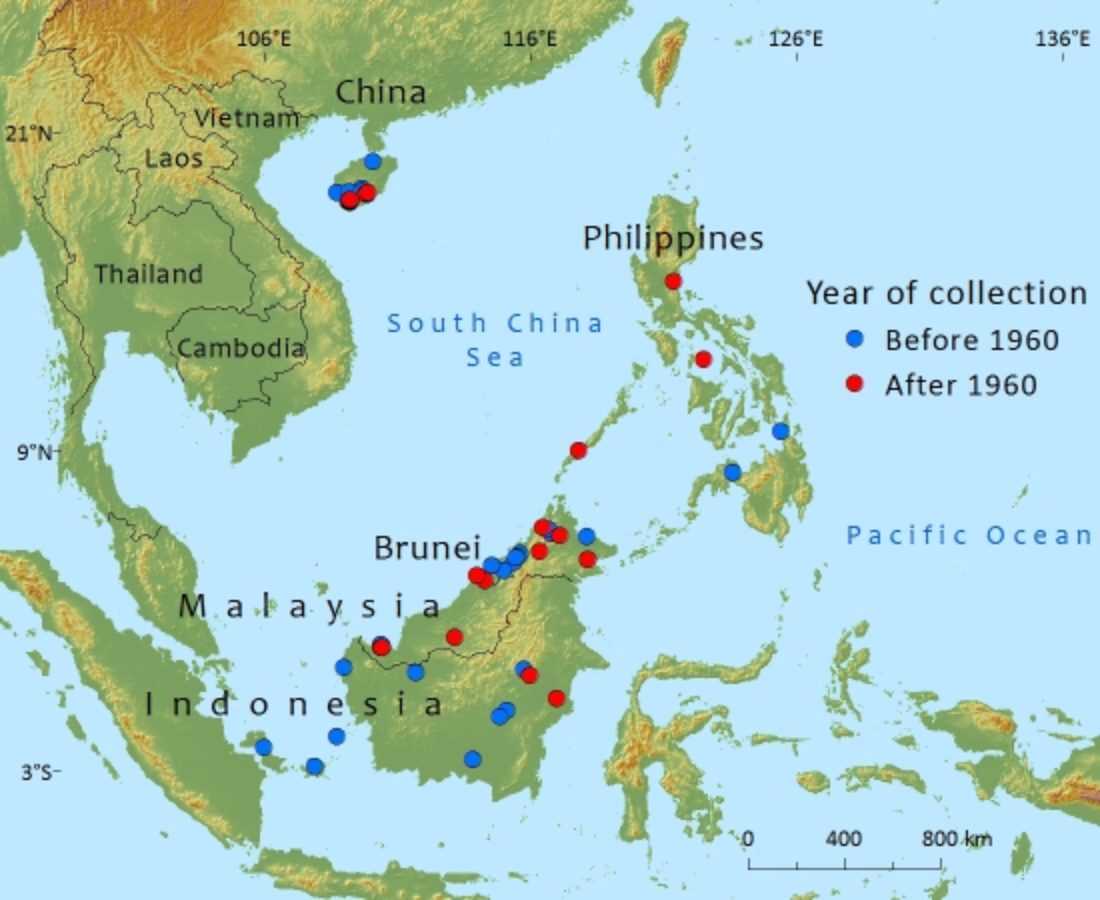Podocarpaceae
Dacrydium pectinatum
Native to China and several countries in South-east Asia where deforestation has dramatically reduced the population
References and further reading
- Curran, L. M., Trigg, S. N., Mcdonald, A. K., Astiani, D., Hardiono, Y. M., Siregar, P., Caniago, I. & Kasischke, E. (2004). Lowland forest loss in protected areas of Indonesian Borneo. Science 303: 1000-1003.
- Farjon, A. (2010). A Handbook of the World's Conifers. Koninklijke Brill, Leiden.
- Luscombe, D, Carter, G. & Farjon, A. 2013. Dacrydium pectinatum. The IUCN Red List of Threatened Species. Version 2015.2. <www.iucnredlist.org>. Downloaded on 07 September 2015.
